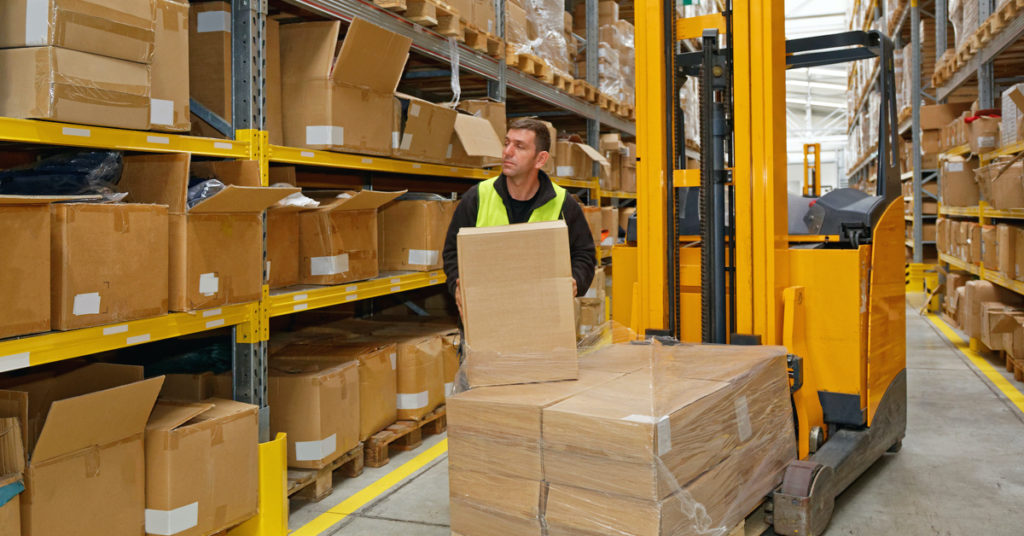Now more than ever, sellers and brands need to understand all the ins and outs of Amazon FBA. Making strategic decisions regarding when and how to use FBA is critical to running a profitable business and seeing incremental growth.
With the Amazon marketplace rapidly changing and supply chain issues throwing wrenches into every part of the process, it’s difficult to keep up with Amazon’s policy changes and the best solutions for Amazon order fulfillment.
That’s where this guide comes in. We’ll cover what FBA is and how it works. We’ll also cover expert advice on how to evaluate whether it’s the right choice for your business, considerations for alternatives to FBA, and levers you can pull to improve profitability with FBA.
What is Amazon FBA?
Let’s start with what Amazon FBA means. FBA is Amazon’s program through which sellers and brands can handle storage, picking, packing, and shipping of orders. The acronym FBA stands for Fulfillment By Amazon.
Roughly half of Amazon sellers take advantage of FBA because of its many benefits. More than 70,000 new sellers adopted FBA just in the last year.
FBA is made up of a complex system of warehouses, delivery vehicles, workers, and software systems that integrate to ensure that when a product is ordered by a shopper it will arrive on their doorstep in a timely way.
You could think of FBA as one piece in the total puzzle that makes up the Amazon supply chain, taking the produced and packaged goods through to their final destination with a customer.
Sellers ship inventory to Amazon and have them handle everything that needs to happen with the inventory from that point forward. It’s also an option for fulfilling orders placed on your own DTC site or another marketplace, through Amazon MCF (Multi-Channel Fulfillment).
Fulfillment Glossary
Before we go any deeper into how Amazon FBA works and how you can make the most of it, let’s clarify a few terms that will be used throughout this guide.
3PL
3PL stands for Third-Party Logistics. It refers to companies that handle storage and order fulfillment for ecommerce businesses. They are third-party because they are neither the seller nor the marketplace.
FBA
FBA is an acronym for Fulfillment By Amazon. This is Amazon’s program that handles storage and shipping for sellers.
FBM
FBM is an acronym for Fulfillment by Marchant. This refers to the option for an Amazon seller to handle fulfillment outside of Amazon either on their own or through a 3PL.
Fulfillment center
Amazon calls its product storage and shipping facilities fulfillment centers.
Multi-channel
A channel is a platform on which goods are sold, such as Amazon or Walmart.com. A multi-channel approach means a seller is utilizing more than one of these channels.
Order fulfillment
Order fulfillment refers to everything that happens with a product from the moment of sale onward, including picking, packing, shipping, and returns.
Packing
Packing refers to placing purchased items in appropriate packaging with shipping labels so the items can be shipped to their customer destination.
Picking
Picking refers to locating and obtaining purchased products from their storage spot within a warehouse so that they can be packed.
Prime
Amazon’s customer loyalty program is called Amazon Prime. Customers who participate in this program preferentially choose items that are eligible for Prime, which is easiest to access for products that are fulfilled via FBA.
Returns
A big part of ecommerce order fulfillment is the returns process which needs to be as easy for shoppers as receiving their orders is.
Shipping
Shipping refers to the stage in a product journey when it travels from a warehouse to the customer who has purchased it.
Benefits of FBA
Why do half of Amazon sellers choose FBA? The program confers many benefits and advantages.
First of all, Amazon FBA sellers don’t need to worry about obtaining warehouses and fleets, hiring fulfillment personnel, or creating efficient logistics systems. If this isn’t your company’s strength, outsourcing all of it to Amazon will free you to focus on what your company does well.
FBA doesn’t stop when the package is dropped off by the delivery person. It also handles returns, refunds, and customer service, so you know you’re covering all these important services that shoppers care about as well as meeting Amazon’s rules for businesses who sell through their site.
Amazon also makes it desirable to enroll in FBA because FBA products are automatically eligible for Prime. These listings display the Prime logo and are eligible for free two-day shipping.
The 200 million (and growing) Prime members who pay for this loyalty program preferentially purchase Prime-eligible products for free and fast shipping. To win those customers on Amazon you probably need to participate in Prime.
Fast and free shipping paired with excellent customer service also supports customer retention.
Although Amazon does offer an option to apply for Seller Fulfilled Prime (see below) it’s easier with the automatic eligibility afforded by FBA.
So, if you want a program that will fully manage all of the headaches of storage, packing, shipping, and returns, and at the same time make your listings more attractive to shoppers on Amazon, FBA may be right for your business.
How FBA works
Whether you’re making decisions about fulfillment providers or providing customer service for your shoppers, it helps to understand the details of how Amazon FBA works.
Let’s break this overview down into three major areas: (1) storage at fulfillment centers, (2) shipping from fulfillment centers to customers, & (3) returns from customers.
Fulfillment centers
Amazon’s warehouses are called fulfillment centers. Amazon has over 100 of these warehouses in the U.S. and the global count is double that number.
In 2019 the Teikametrics team visited and toured an Amazon Fulfillment Center to better understand what’s involved in storing, picking, and packing Amazon products.
If you’re utilizing a Fulfillment Center, first you need to ship your products to that center. Amazon stores products at the warehouse organized by SKU (stock keeping unit).
Amazon’s computer system knows the exact location of every product it has stored in the warehouse so that when a shopper places an order for your product, they can quickly pick it from that location and pack it for shipping.
Amazon might handle your inventory and be responsible for its location but you’re responsible for paying close attention to how much inventory you’re sending to them and how quickly that inventory is selling through.
You need to accurately forecast your inventory needs so that you don’t risk stocking out or incurring long-term storage fees for keeping your inventory at the Amazon warehouse too long.
You need to be able to correctly forecast how much you’re going to sell and get as close to that as possible, or you’re going to find yourself in a position where you’re overselling your product, you’re out of stock, and you have a bunch of customers who enthusiastically jumped on a certain marketing initiative that you pushed out, and now are left wondering if they bought a scam because now it says two to five weeks or two to six weeks of delivery.
The pandemic brought the pressures of increased ecommerce customer demand to FBA in a significant way. To optimize their storage space (which is growing but not infinite), Amazon instituted stricter policies around consequences for poor inventory management.
Amazon measures and judges your inventory management with the Inventory Performance Index (IPI). If you’re going to utilize FBA you’ll need to understand how IPI works to ensure that Amazon continues to permit you to ship the proper amount of inventory to their warehouses.
When you stock out, obviously the worst thing about that is that you’re disappointing your potential customer. But if you’re an Amazon seller, you’re also throttling yourself in terms of your potential earnings next quarter, because Amazon has implemented the Inventory Performance Index score. Before [IPI] there wasn’t any…metric that had consequences. Now there are consequences associated with stocking out, being overstocked. You just need to have the right balance. So you need to have a really smart inventory management strategy.
Delivery
Ordered products are packed at the fulfillment center, but that’s just the beginning of their journey to their final destination. Amazon makes use of an enormous network of transportation providers to get the package where it needs to go.
Amazon Transportation Services (ATS) is responsible for identifying the best way to convey orders from the fulfillment centers to their destinations. They have their own transportation resources such as vans and even a fleet of more than 70 airplanes.
They’re also constantly experimenting with new delivery solutions such as the Amazon Scout robot, drones, and a custom electric delivery vehicle.
They also rely on Amazon Logistics, a network of third-party logistics providers who handle local transportation for order fulfillment.
Amazon’s Flex software allows individual carriers to respond to the need to fulfill orders for Amazon.com as well as Prime Now and Amazon Fresh.
FBA delivery prioritizes fast shipping tags which correlate with increased conversion rates.
Returns
No fulfillment program would be complete without handling returns. Because the prospect of free and easy returns motivates shoppers to buy online, Amazon sellers generally experience a higher volume of returns than they would in a brick-and-mortar store.
Amazon FBA handles returns including processing requests, issuing refunds, and assessing the condition of returned items to determine whether they can be resold or need to be handled another way.
The returns process is dictated by Amazon’s policy which is generous toward shoppers, allowing them up to 30 days to request a return and generally granting full refunds.
Although this process is controlled by FBA, sellers can implement strategies to mitigate these terms. They can decrease the number of returns by setting clear expectations about the product’s look, features, and functionality within the product detail page. They can also recoup costs by liquidating unresellable products via programs offered by Amazon.
Use FBA to fulfill off-Amazon orders
Although FBA originated as a way to handle fulfillment for Amazon sales, sellers can now take advantage of FBA to fulfill orders placed elsewhere through FBA Multi-Channel Fulfillment (MCF).
This allows you to streamline your inventory and fulfillment in one place. Have Amazon handle fulfillment by connecting to BigCommerce, Shopify, and more. You still get the type of rapid fulfillment shoppers expect, with 1-day, 2-day, and 3-5-day shipping options.
Until recently you couldn’t use FBA to fulfill Walmart orders because Walmart disallowed Amazon logistics. However, FBA MCF allows you to opt out of Amazon logistics and use another carrier such as FedEx or USPS.
A lot of these changes that Amazon rolled out really recently is enabling sellers to leverage the FBA network for their non-Amazon channels.
What are Alternatives to FBA?
Amazon FBA isn’t the only option for fulfillment if you want to sell on Amazon or even get the Prime badge on your listings.
Any fulfillment plan that isn’t FBA, Amazon will refer to as FBM (Fulfilled By Merchant). Especially during the early days of the pandemic when the ability to ship to Amazon warehouses was severely hampered, many sellers realized that setting up FBM as a backup has many benefits.
Storing some inventory in your own warehouse or a third-party warehouse, and having an alternative logistics system in place, gives you the flexibility to continue to fulfill orders even if FBA is unavailable. You can also handle certain items through one system and other items through the other.
FBA (Fulfillment by Amazon) serves as an influential example of how beneficial Amazon fulfillment can be, but also how using a single fulfillment strategy can leave brands vulnerable. FBM (Fulfilled by Merchant), or utilizing an alternative fulfillment partner will help you overcome current FBA restrictions, have more control over your shipments, and can even reduce the cost for some products! Whether you’re fulfilling orders in-house or using a 3PL like Deliverr, the current FBA system might not be ideal for Amazon sellers, but the additional time, sales, and opportunities generated by the pandemic mean that FBM can help you to start selling on Amazon in no time.
Depending on the size of your business and the type of products you’re shipping, you might look to the big shipping providers like USPS, UPS, and FedEx. For a set of systems that are designed to serve the ecommerce sector, look to ecommerce Third-Party Logistics providers (3PLs). It’s important to ensure that you can deliver products as quickly as FBA to meet consumer expectations.
If you handle inventory and fulfillment in one of these non-FBA ways, you still can get the benefits of Prime through Seller Fulfilled Prime. It just takes a bit more effort on your part than going through FBA. You’ll need to submit an application demonstrating that you meet Amazon’s standards for things like shipping options, fulfillment speed, returns handling, and customer service.
Amazon has the most sophisticated fulfillment network in the world right now, and the resources to sustain it. Using FBA gives you a direct line to their advanced global infrastructure. At the same time, it’s never a good idea to put all your eggs in one basket. Using FBA for Amazon is a no-brainer, but you need to supplement your fulfillment operations with backups to build resilience. You can do this by maintaining inventory in your own warehouses or with another fulfillment partner who can kick in case anything happens with your FBA inventory. I recommend using an FBA prep center that can both get your items FBA-ready and serve as your fulfillment partner for FBM and other channels.
Is Amazon FBA worth it?
As discussed above, Amazon FBA does provide a lot of benefits. By outsourcing storage and fulfillment to Amazon you free up resources to focus on other aspects of your business.
FBA makes it easy to fulfill quickly, qualify for Prime which Amazon shoppers look for, and ensure that you meet Amazon’s terms of service.
All that being said, you also need to understand the bottom line and whether it will be profitable for you to utilize FBA.
What are Amazon FBA fees?
To answer this question, let’s start with an overview of FBA fees. To take advantage of FBA you’ll have to pay a few different types of Amazon fees.
First, even just to become an Amazon seller you’ll need to pay the monthly subscription fee.
For each item sold, Amazon will charge a referral fee. This is based on a percentage of your sale price and varies depending on the category. You can now sign up for the Brand Referral Bonus program to reduce referral fees through your off-Amazon advertising programs.
The two primary fees associated with FBA are storage fees and fulfillment fees.
Storage fees are charged monthly based on cubic feet of storage space used. There is variation for standard size and oversize items, as well as variation for the holiday season which lasts from September to January.
Fulfillment fees vary depending on several factors. Amazon distinguishes between apparel fulfillment and non-apparel fulfillment. Fulfillment fees are then further broken out by dimension and shipping weight.
To further complicate costs, Amazon’s Small and Light program gets you access to lower fulfillment costs for products that meet the criteria.
Other fees that may apply depending on circumstances include long-term storage fees which you can incur if inventory turnover is slow and it has been in the warehouse for more than 365 days. You may also incur inventory removal order fees, high-volume listing fees, dangerous goods storage fees, and refund administration fees.
Is Amazon FBA profitable?
Let’s get to the real question at hand – can Amazon FBA make you rich?
Yes, absolutely. Many sellers and brands have successfully launched and scaled on FBA. The enormous amount of money rolling into Amazon acquisition businesses is a testament to that success.
However, success comes from careful planning, ongoing thoughtful bookkeeping, and making use of opportunities to minimize your costs and maximize your profits.
I like to talk a lot about inefficiencies when it comes to inventory. No matter what level of ecommerce merchant you are, whether you’re a straight Amazon, whether you’re just a couple of channels, whether you’re Amazon but you’re international, there are inefficiencies in your supply chain and in your inventory processes that no matter how much volume you’re doing, you could always do better
Amazon provides an FBA Revenue Calculator to help you to understand costs and profitability when utilizing FBA. There are also many third-party Amazon FBA calculators designed to help you research, forecast, and calculate your profitability with FBA.
What about the frequently asked question: are fulfillment costs COGS? If you use Teikametrics Flywheel it will help you to understand your FBA profitability because you can enter COGS (cost of goods sold). We suggest including the cost of shipping goods to a fulfillment center in your COGS but you don’t need to include FBA fees because the software will account for those automatically.
Expert Tips for FBA profitability
Outside of calculating profitability for your particular products, looking at their size and weight, as well as your margins, there are many levers you can pull to increase profitability with FBA.
Follow every Amazon rule
This might seem like a no-brainer, but it’s pretty challenging because Amazon has so many different policies and terms of services managed by so many different teams. For better or worse, it’s up to you to understand the rules and ensure that you are following them. Amazon doesn’t take very kindly to “I didn’t know” as an excuse.
Ensure that products you send to FBA are packed strictly according to Amazon’s instructions for the best chance at them rapidly and easily being processed. Be alert to updates in Amazon’s policies. The implementation of IPI changed how sellers need to think about inventory management, and future changes from Amazon will keep you on your toes.
Watch your IPI
Amazon uses the Inventory Performance Index to determine whether and when you can replenish inventory at their warehouses. Their goal is to keep inventory moving at a steady sell-through rate so they’re not wasting warehouse space holding goods for a long time.
Tracking IPI will help you to understand what you need to address so that you’ll be able to have FBA inventory on hand for sales events or seasonal peaks.
Take advantage of Small & Light
You can reduce FBA fees if your products qualify for the Small & Light program. This might require reconfiguring how you package products. Many products can be reduced in volume through compression.
Large packaging designed to capture attention on a store shelf or make a product seem impressive isn’t what’s going to bring in conversions on the digital shelf so consider more streamlined packaging for FBA. Bonus: less packaging can also be less expensive to source and better for the environment.
Watch out for long-term storage fees
You get dinged with additional long-term storage fees for products that are stored at FBA for more than 365 days. So you’ll want your inventory management system to alert you when inventory is approaching this deadline. You can then evaluate the most profitable (or lowest loss) strategy for handling that aging inventory.
Taking into account margins, CPCs, removal fees, and of course long-term storage fees, your best path might be to increase advertising spend to drive liquidation or remove the products either back to your own warehouse or via one of Amazon’s liquidation programs.
Take steps to reduce returns
Returns are a huge part of online selling. Shoppers cannot touch or try on products digitally so they rely on the ability to make free and easy returns, which makes it more complex to track inventory and also increases your fees.
You can reduce returns by using every tool on the product detail page to answer shopper questions and set clear expectations so they have a better idea that they’re ordering what they want.
Implement smart advertising
Using FBA to sell on Amazon (or MCF for other marketplaces) means your products are available on sites that consumers trust, but there’s tremendous competition. Shoppers can only buy your products if they can find them, and finding them isn’t as simple as following the directions to the location on a physical shelf.
On marketplaces like Amazon, advertising is table stakes. Use Sponsored Products and other ad types to give your products a fair shot and discovery and purchase.
Turn on the Brand Referral Bonus Program
Amazon’s new Brand Referral Bonus program rewards you for running advertising campaigns off-Amazon that drive traffic to your products on Amazon. With this program, when your off-Amazon advertising leads to sales on Amazon, then Amazon reduces your referral fees.
It’s straightforward and free to sign up, although you do need to also have Amazon Attribution set up because the bonus program is calculated based on stats collected through that integration.
Check for Amazon’s mistakes
With so much complexity of so many different systems, Amazon does sometimes make mistakes with inventory and fees. So, even though Amazon is handling storage and fulfillment for you, it’s still important for you to audit your account. That will enable you to submit claims for reimbursements when you’re certain that Amazon has made a mistake.
Final Thoughts
Amazon FBA is a sophisticated way to handle your ecommerce fulfillment, for both on- and off-Amazon sales. Strong, resilient businesses also establish alternatives to FBA to prevent any delays in order fulfillment.
You can get the most out of FBA if you understand all the rules and tricks for sellers. That includes thoughtful inventory management paired with expert ad management.
Teikametrics’ ecommerce analysts utilize Flywheel 2.0 to optimize ads to account for a business’s goals, margins, and inventory needs. We’d love to help with your advertising.










